Dodge Journey: Manifold, exhaust, rear
Removal
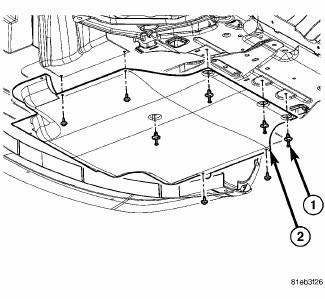
Fig. 305: Belly Pan
- - belly pan fasteners
- - belly pan
1. Remove the belly pan (2).
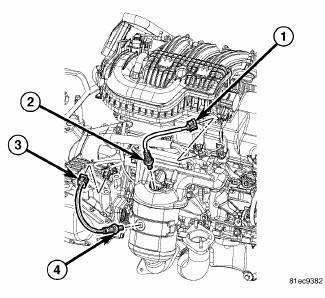
Fig. 306: Oxygen Sensors
2. Remove the oxygen sensors (2) and (4).
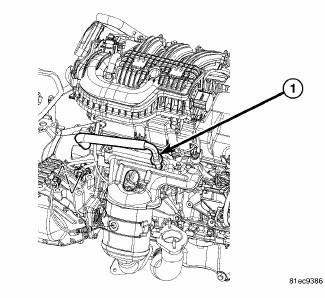
Fig. 307: Exhaust Gas Recirculation Tube
3. Remove the EGR tube (1).
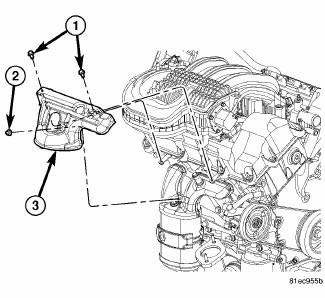
Fig. 308: Rear Maniverter Heat Shield
4. Remove the rear maniverter heat shield (3).
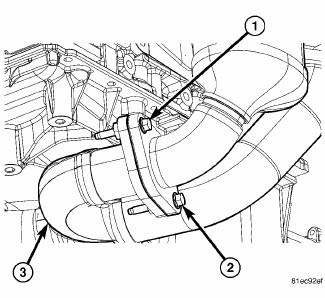
Fig. 309: Exhaust Cross-Under Pipe
5. Remove the rear maniverter-to-crossunder fasteners (1) and (2).
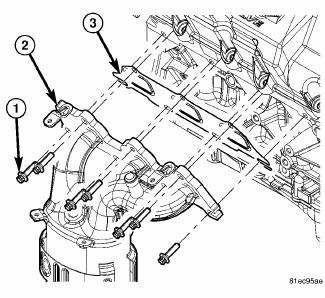
Fig. 310: Rear Maniverter Fasteners
6. Remove the rear maniverter fasteners (1), and the rear maniverter (2).
Inspection
1. Inspect exhaust manifolds for damage or cracks.
2. Check manifold flatness.
3. Inspect the exhaust manifold gasket for obvious discoloration or distortion.
4. Check distortion of the cylinder head mounting surface with a straightedge and thickness gauge.
Installation
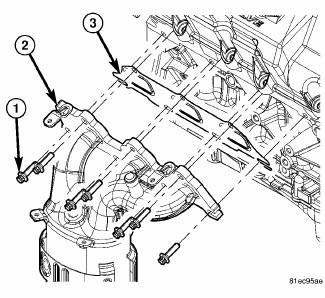
Fig. 311: Rear Maniverter Fasteners
1. Install the rear maniverter gasket (3), the rear maniverter (2), and the rear maniverter fasteners (1).
Tighten the rear maniverter fasteners to 23 Nm (17 ft. lb)
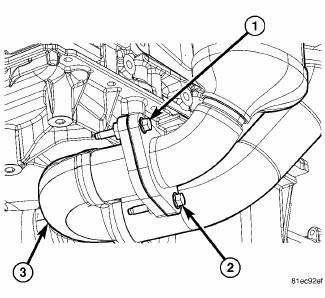
Fig. 312: Exhaust Cross-Under Pipe
2. Install the rear maniverter-to-crossunder fasteners (1) and (2). Tighten to 29 Nm (21 ft. lb.).
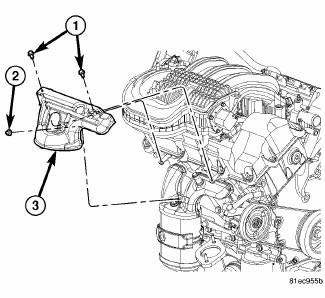
Fig. 313: Rear Maniverter Heat Shield
3. Install the rear maniverter heat shield (3). Tighten fasteners to 12 Nm (106 in. lb.).

Fig. 314: Exhaust Gas Recirculation Tube
4. Install the EGR tube (1).
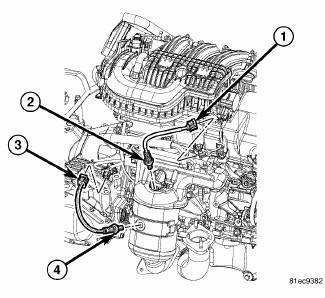
Fig. 315: Oxygen Sensors
5. Install the oxygen sensors (2) and (4). Tighten to 41 Nm (30 ft. lbs.).

Fig. 316: Belly Pan
- - Belly Pan Fasteners
- - Belly Pan
6. Install the belly pan (2).
 Manifold, exhaust, front
Manifold, exhaust, front
Removal
1. Disconnect negative battery cable.
2. Remove the engine cover.
Fig. 295: Oxygen Sensors
3. Disconnect and remove oxygen sensors (2) and (4).
Fig. 296: Upper Maniverter Heat Shiel ...
 Manifold, intake
Manifold, intake
Diagnosis and Testing
INTAKE MANIFOLD LEAKS
An intake manifold air leak is characterized by lower than normal manifold
vacuum. Also, one or more
cylinders may not be functioning.
WARNING: ...
See also:
INSTRUMENT CLUSTER DESCRIPTIONS
1. Coolant Temperature Gauge
The temperature gauge indicates engine coolant temperature.
Any reading within the normal range indicates
that the cooling system is operating satisfactorily. The
gaug ...
Diagnosis and Testing
REFRIGERANT SYSTEM LEAKS
WARNING: R-134a service equipment or vehicle A/C system should not
be pressure
tested or leak tested with compressed air. Mixture of air and R-134a can
be co ...
Non-monitored circuits
The PCM does not monitor all circuits, systems and conditions that could have
malfunctions causing
driveability problems. However, problems with these systems may cause the PCM to
store diagnosti ...
